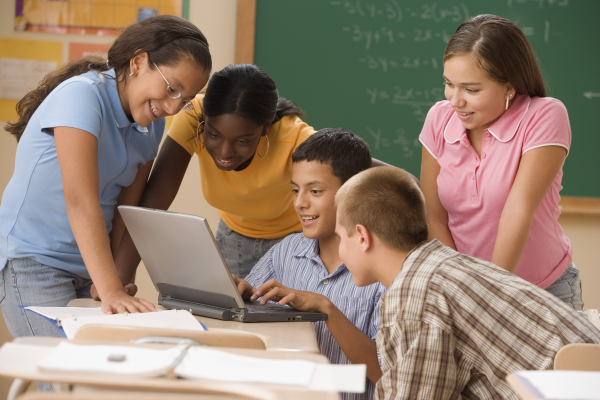Wow! I can't believe our computers in the classroom course is over. I have learnt more than I thought I would about technology integration within the classroom! I was also surprised because I realized how practical technology is and how easy it actually is to figure out. I have also learnt how technology allows educators to be both creative and innovative with how they incorporate technology into thier lesson plans. Some favorite uses of techology that I found and that I know I will be using in the future are:
1. Google docs: I had NO idea that something like this existed! I love that you can collaborate with others as groups online, all at once, on the exact same document.
2. Edutopia: As part of expanding my personal PLN, I believe edutopia (as found on twitter) is an excellent way of listening to other educators and their inspirational ideas.
3. Use of skype in classroom: I loved reading one article about how skype could be used to connect classrooms around the globe to learn about different cultures!
4. Common Craft Videos: This was such a blast to create! This is such a great idea for getting students involved in project based learning and is applicable to every single subject.
Overall, I am greatful for such a wonderful class, classmates, inspiring professor, and all the valuable knowledge and insight we learnt for our future classrooms.
Wednesday, 27 February 2013
Friday, 8 February 2013
Creativity and Technology Integration
Educational Problem: “Boxed
Up” Art, Math, Science and Literacy Subjects
This week after watching the two
videos assigned in our EDU 331 class, (click here and here), I found a common theme being discussed regarding
our educational system today: we tend to separate categories of creativity and critical
thinking and think of them as contrasting subjects. We put Math, Literacy,
Science and Art into separate boxes but do not think about how we can integrate
each of these subjects together. We don’t understand how art and creativity
should be a part of math, literacy, and science lessons. Instead, we provide
critical thinking algebraic math lessons, and save art for any spare time left
over. In doing so, we are simply raising a generation of students to become university
professors. However, not all students are meant to be university driven. Our education
system seems to believe that university is the way to go, and we don’t take
time to acknowledge the value of the trades. I believe that we need to open up
options for our students so that they can choose a vocation that suits their passions.
We need to acknowledge that each of our students learns differently and is
passionate about different things. We need to find ways to bridge our student’s
various interests, the curriculum that needs to be taught, and find solutions
to help students engage in hands-on learning to enable their creative and
problem solving skills. We need to be coming to education with the idea of how
we can invite a “child like wonder” into what our students are learning. There
is not just one right way to learn, and students should be offered the
opportunity to express their creativity in their learning.
So Just How Do We Do This?
I believe that creativity can be
maintained through collaboration and benefiting from acknowledging student’s
diversities. If students are working together, sharing ideas, and seeing different
perspectives on ways to learn, they will be able to widen perceptions of their knowledge.
Being creative is about allowing students to experiment, and not about giving
them the answers. Rather, we should be giving them the opportunity to explore tools
that they need to find answers, in new avenues. Specifically, technology is a
part of our generation today. I see technology as a way of enhancing a lesson. I think that integrating technology and
finding appropriate ways of using it within the classroom, is a way of making
learning more exciting and can be a means for collaboration and learning from
one another. One example, is that for a music lesson you could use a
website something like Garageband as a way for helping students to record their
own music, write music, or even learn how to play a new instrument. Or, perhaps by skyping in another class from
another country or province, you could give a great lesson about geography, social
studies, traditions or culture. Or, as a way of getting students to
brainstorm and reflect you could set up a blog where students are free to
comment and bring new ideas to what has been taught in class. I believe these
are all ways that integrate interdisciplinary subjects, student’s passions, and
promote collaboration and innovative thinking for students.
Subscribe to:
Posts (Atom)
